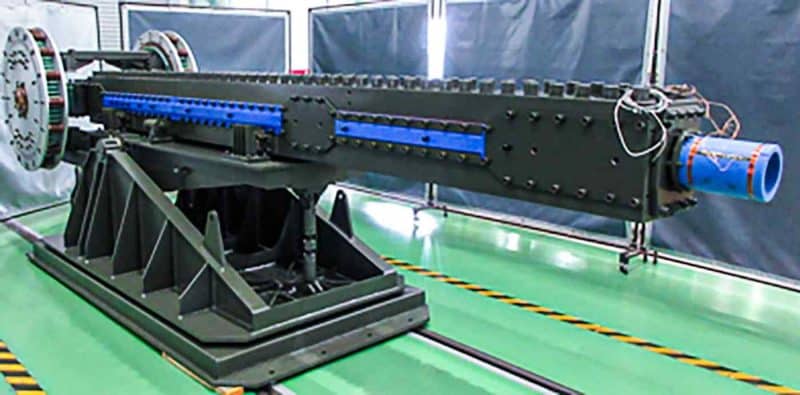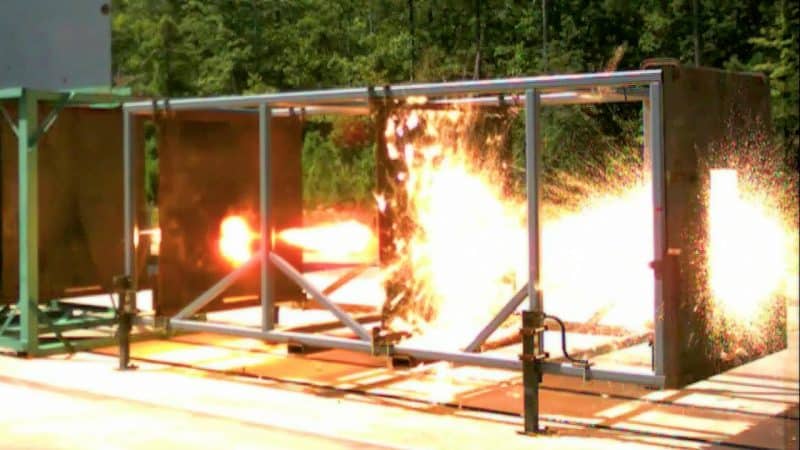In 2021, after a decade of investment and testing, the US Navy announced that it was ending the program to develop an electric cannon, or Rail Gun. Developed by BAe system, this aimed to develop a gun using electromagnetic energy to propel a shell and thus achieve a muzzle exit speed that could reach Mach 10, where shells propelled by powder struggle to exceed Mach 4. 220 due to the speed of propagation of the deflagration. Theoretically, the US Navy's Rail Gun should be able to reach targets up to 340 miles away, more than XNUMX km away, and at the same time offer advanced air and air interception capabilities, including against very moving targets. high, or very quickly, all for a cost of use representing only a fraction of the price of a missile. Unfortunately, the technologies used then were still insufficiently mature to achieve such objectives, at least were the arguments put forward by the US Navy to justify the end of the program. The fact is, although the tests carried out by BAe were described as promising, they encountered several problems, particularly in terms of overheating of the rail during use, generating significant constraints on performance and safety degradation.
At the same time, the US Army, and its industrial partner Lockheed-Martin, also threw in the towel at the same time. Less ambitious than the US Navy program, with an energy release of 60 kilojoules to achieve a range of 100 km compared to more than 100 kj and 340 km for the Navy, the US Army initiative faced the same difficulties. , as well as an obvious problem of electrical production and mobility, much more sensitive for a land device than on a destroyer of more than 10.000 tons. Other countries have also made progress in this area, such as China or Turkey, but to date there is no indication that they have actually succeeded in resolving the pitfalls that spelled the end of American programs. However, this did not stop Japan, which announced at the beginning of last year, the launch of an electric cannon program, with the aim of using it to densify the country's anti-air and anti-missile defense, in particular against hypersonic missiles.

In reality, the Rail Gun program had already started several years ago at the time of this announcement, and the allocation of an envelope of 6,5 billion yen for its development in the 2022 budget. Indeed, according to the Ministry of Japanese defense, several developments have made it possible, until now, to reach muzzle exit speeds of 2.300 m/s, or Mach almost Mach 7 using a technological demonstrator. However, and in order to respect the very ambitious timetable defined by the Japanese Ministry of Defense on this subject, the Japanese authorities have opened discussions with Washington but also with the manufacturers who developed the Rail Gun programs for the US Navy and the US Army, according to statements made by Shigenori Mishima, the vice commissioner and CTO of the technologies, acquisitions and logistics agency of the Ministry of Defense, at Nationaldefensemagazine.org during the DSEI show.

75% of this article remains to read,
Subscribe to access it!
The Classic subscriptions provide access to
articles in their full version, and without advertising,
from 6,90 €.
Newsletter subscription
Register for the Meta-Defense Newsletter to receive the
latest fashion articles daily or weekly


[…] […]
[…] April 18, 2023 1 […]